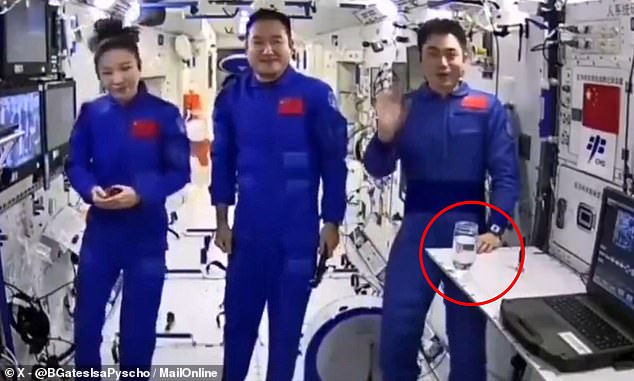
Glass of Water on China’s Tiangong Space Station Ignites Online Gravity Conspiracy Theories
Conspiracy Theorists Baffled by Glass of Water on China’s Space Station
[Image: A glass of water sits on a table aboard the Tiangong Space Station, appearing unaffected by microgravity.]
A video from China’s Tiangong Space Station showing an open glass of water sitting calmly on a table has sparked widespread skepticism online. Conspiracy theorists, who often question the authenticity of space missions, argue that the clip—where water defies expectations of floating freely—"proves" the scene was filmed on Earth.
Social Media Frenzy
Social media users were quick to voice doubts. “The water wouldn’t stay in the glass. It would be floating,” one X user insisted. Others speculated the astronauts were “walking on an uneven surface” to mimic zero gravity. Several comments accused China of staging the video, with one asking, “So, they’re not in space?”
[Image: Close-up of the water glass positioned near a computer, with users questioning the safety risks in microgravity.]
The confusion stems from a misunderstanding of microgravity physics. While water in space typically forms floating spheres, surface tension—a property causing molecules to stick together and adhere to surfaces—keeps liquids contained in open vessels if undisturbed.
Science vs. Speculation
Space historian Jordan Bimm explained to AP: “Water molecules stick to glass and each other more than dispersing into air. Without external force, water clumps together, creating the illusion of normal gravity.” European Space Agency astronaut Samantha Cristoforetti previously demonstrated this phenomenon, struggling to pour water from a container aboard the ISS.
[Image: ESA astronaut Samantha Cristoforetti attempts to pour water in microgravity, showing it clinging to the container.]
The Tiangong video was part of an educational broadcast called Tiangong Class, where astronauts demonstrated buoyancy by submerging a ping-pong ball. A behind-the-scenes clip revealed the crew carefully filling the glass using a straw and securing it with Velcro.
Musk’s AI Adds Fuel to the Fire
Elon Musk’s AI chatbot, Grok, worsened confusion by incorrectly stating, “Water would float out of a glass in microgravity.” While critics called the experiment “risky” near electronics, the setup was intentional for educational purposes.
[Image: Astronauts on Tiangong prepare the glass using a straw, captioned: “Preparing for class in space is not easy!”]
Why It Matters
China’s space program, which launched its first crewed mission in 2003, has achieved milestones like lunar landings and a Mars rover deployment. The Tiangong station, operational since 2021, symbolizes its growing influence in space exploration.
Conclusion
While conspiracy theories persist, physics explains the water’s behavior. As one commenter noted: “It’s called surface tension. Maybe spend five minutes researching.” The incident highlights how public fascination with space often clashes with scientific literacy—and how easily misinformation spreads.
[Image: The Tiangong Space Station orbiting Earth, showcasing China’s advancements in space technology.]
Key Chinese Space Milestones
- 2003: First crewed mission (Shenzhou-5).
- 2019: Chang’e-4 lands on the moon’s far side.
- 2021: Tiangong station core module launched.
- 2022: Crewed Shenzhou-14 mission docks with Tiangong.
The debate underscores a recurring theme: space agencies must communicate science clearly to counter myths—especially when a simple glass of water becomes cosmic controversy.


